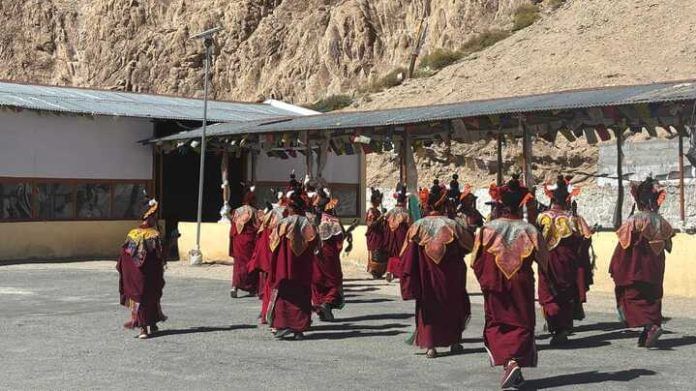The simmering discontent in Ladakh has pricked the national consciousness. Recently, four protesters were killed, 15 other protesters and around 30 security personnel were also injured, followed by the violence. The demand of the people to restore statehood and bring the region under the Sixth Schedule of the Constitution for the protection of their identity, culture, and dignity is legitimate and just. It adheres to the federal principle of the Indian Constitution. BJP’s majoritarian and singular agendas, such as “One nation, One people, One culture”, threaten the regional identities.
A recent fact-finding mission, led by the Socialist Party (India), the National Alliance of People’s Movements and Hum Bharat Ke Log, titled “Understanding Ladakh”, has shed light on the fears gripping the region. The government announcement of five new districts – Sham, Nubra, Changthang, Zanskar, and Drass was labelled “deeply alarming”, having sent what the report calls “shockwaves through the region”. Beyond the ostensible rationale of administrative efficiency, the delegation senses the disquieting possibility of corporate intrusion into Ladakh’s fragile ecosystems and rich mineral wealth. Demographic reconfigurations and future delimitation exercises threaten to unsettle the delicate socio-cultural balance that has defined the Himalayan frontier for years.
The Centre has planned renewable energy projects, solar parks, and mining projects in Changthang (home to grazing pastures at the highest elevations in the world). These development plans would bring thousands of workers from other regions, and they would eventually acquire domicile status. It will alter the demographic profile and political representation of the region, as cautioned by the report. The local people fear that these actions undermine their native identities, traditions, and livelihoods. It will also dilute their demand for sixth schedule protection, accorded to the region having a distinct tribal population.
Languages, customs, cuisine, and folklore constitute the intangible architecture of a civilisation. They are the repositories of collective memory and the scaffolding of social cohesion. Preserving them is not a sentimental indulgence but a civilisational imperative.
It’s natural for a society to adopt and embrace other cultural identities. Cultures can travel beyond boundaries and fit into a new place through their soft power. However, the forceful imposition of cultural identity with political might is a cause for concern.
Some recent studies have raised concerns about the extinction of regional languages. Rajasthani-Marwari languages such as Dhatki, Dharvadi, and Thali are slowly losing ground. By making Hindi its official language, Rajasthan neglects the depletion of its thousand-year-old Rajasthani linguistic identity. Rajasthani—a group of distinct languages that lacks a script—has a thousand-year-old literary history, making it culturally viable. Rajasthani literature often depicts the history of Rajasthan, its demography, customs, and its rulers. Not recognising it can weaken their roots.
Even Gujarati, a language with a script, has also been overshadowed by the popular influence of Hindi. It’s also reported that urban Punjabi Children prefer to converse in Hindi, leaving their mother tongue behind.
Also read: GST reforms show India’s mature federalism and citizen-centric governance
Uniformity is not Unity
Apart from languages, other cultural components, such as religious sects, also define cultural identities. Hinduism is not a monolithic religion. In fact, the Lingayat sect in Karnataka wants to be recognised as a separate religion. It’s an attempt at preserving their unique identity.
Even though people are gathered under the wider umbrella term, Hinduism, the cultural diversity among the Indian society is steeped in the worship of unique regional demigods and subsects. Another example of Hinduism not being uniform lies in the Buffalo sacrifices in Chittorgarh during Mahanavami, and animal sacrifices for demigods such as ‘Ayyanar’ and ‘Muni’ in Tamil Nadu. Hence, the idea of Hindutva and Hindi linguistic policies aimed to make the nation uniform will pose a significant threat to the very fabric of this diversity.
Federalism plays a vital role in combating these challenges. The nature of federalism is to accommodate both national unity and regional diversity in tandem. The strong federal structure in a polity can integrate the interests of regional actors and uphold the sovereignty of the Centre.
Even though the federal structure that is enshrined in our constitution gives room to accommodate all the cultural and regional interests, the discretion has been left with the legislators who handle it. If the lawmakers embrace the federal structure, the unique regional identities will be safeguarded. India’s enduring strength has never resided in coercive conformity but in coexistence.
Karti P Chidambaram is a Member of Parliament for Sivaganga, and a Member of the All India Congress Committee. His X handle is @KartiPC. Views are personal.
(Edited by Theres Sudeep)






